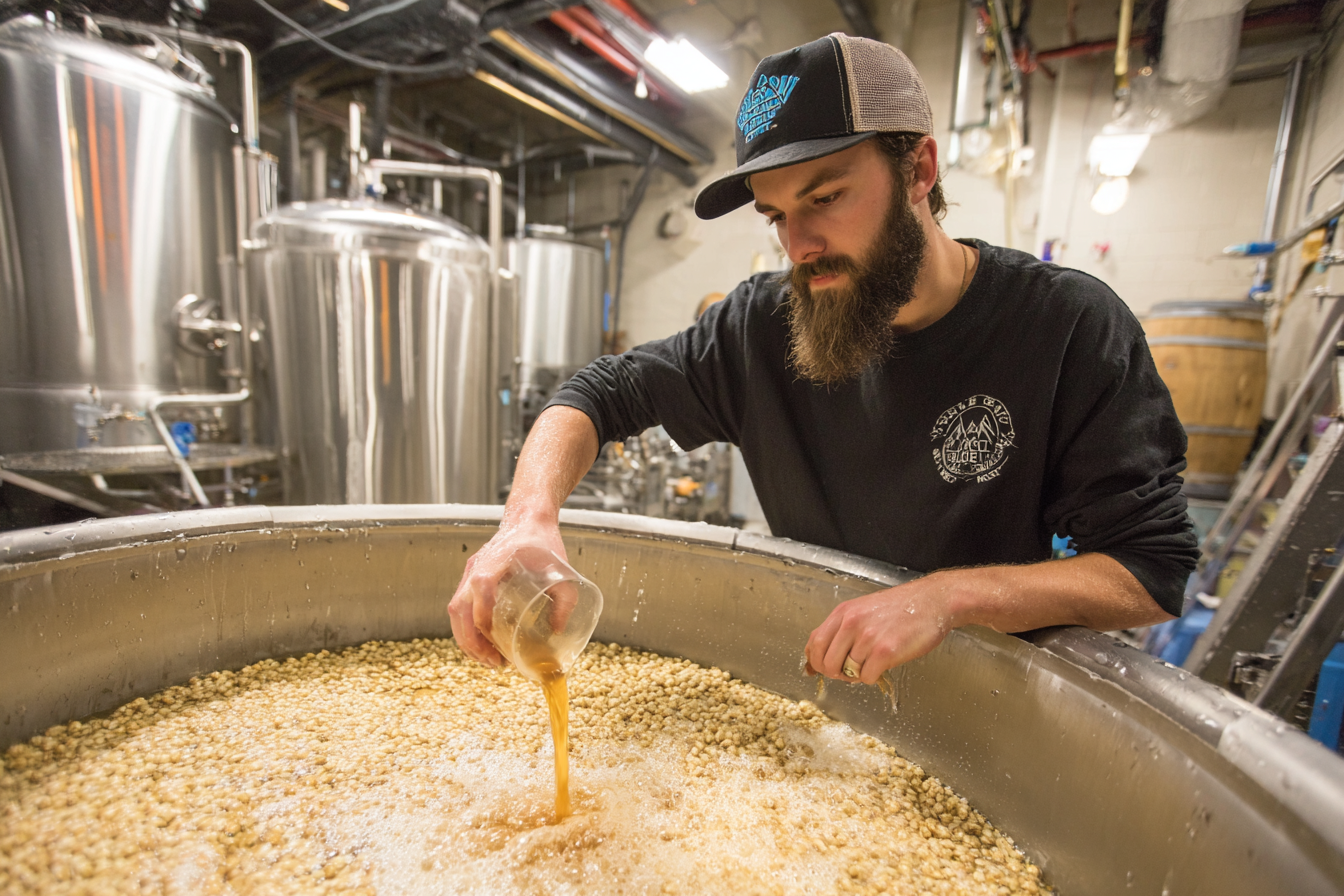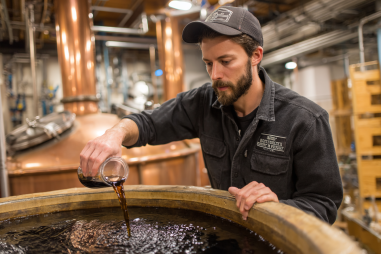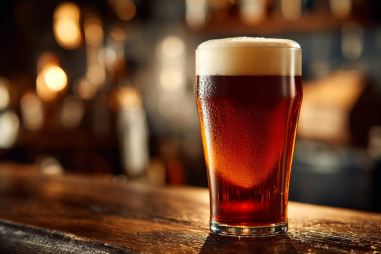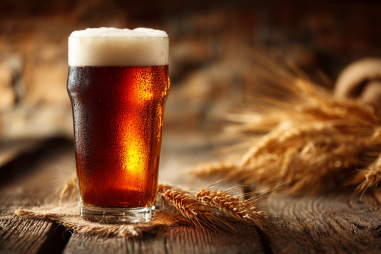American Barleywine is a powerhouse beer style that combines bold flavors, high alcohol content, and complex brewing techniques to create a truly memorable drinking experience. Known for its rich malt backbone, assertive hop character, and long aging potential, this robust ale challenges both homebrewers and professionals alike. Whether you’re aiming to brew your first batch or refine your approach, understanding the intricate brewing process is key to mastering this heavyweight beer. In this guide, we’ll explore every step from selecting the perfect ingredients to managing lengthy fermentation and aging stages, equipping you with the knowledge to craft a stunning American Barleywine.
Overview of American Barleywine Characteristics
American Barleywine stands apart from other beer styles due to its remarkable strength and flavor complexity. Typically ranging from 8% to 12% ABV (alcohol by volume), this ale is designed to be sipped and savored, much like a fine wine. It usually features a deep amber to dark mahogany color, with a thick and sometimes slightly sweet malt profile balanced by pronounced hop bitterness and aroma. Compared to its English counterpart, American Barleywine exhibits more assertive American hop varieties, delivering piney, citrus, and resinous notes that complement the rich caramel, toffee, and dried fruit flavors from the malt bill. The mouthfeel is full and warming, often with a smooth finish that lingers.
Its complexity and elevated alcohol content mean the brewing and conditioning process requires patience, careful control, and attention to detail. The extended aging period allows flavors to meld and mature, reducing any harsh alcohol sensations while enhancing smoothness and depth.
Ingredients Selection: Malt, Hops, Yeast, and Water
The foundation of a superb American Barleywine lies in selecting high-quality raw materials. Each ingredient contributes uniquely to the final beer’s profile and character.
Malt
Malt selection is critical to building the rich, full-bodied backbone of the barleywine. Base malts such as Pale Malt or 2-Row provide a clean fermentable sugar foundation. Specialty malts including Crystal (or Caramel) malts in varying degrees (light to dark) add sweetness, color, and complex flavor notes such as caramel, toffee, and dark fruits. Many brewers also use Munich, Victory, or Special B malts for enhanced nuttiness and depth. A small addition of roasted malts can introduce slight roastiness without overpowering. Given the style’s strength, a large grain bill with a high malt extract or grain-to-water ratio is typical.
Hops
American Barleywine owes its distinctive hop character to bold American hop varieties, selected for their assertive bitterness and aromatic qualities. Common choices include Cascade, Centennial, Chinook, Columbus, Amarillo, and Simcoe. These hops contribute pine, citrus, floral, and resinous notes, balancing the malt sweetness. The hopping schedule often features heavy bittering additions early in the boil and aromatic additions late or during fermentation (dry hopping) to preserve hop character and complexity.
Yeast
Choosing the right yeast strain is crucial to handling the high gravity of barleywine wort and to impart desirable esters. American ale yeast strains, such as Wyeast 1056 or Safale US-05, are preferred for their clean fermentation profile, attenuation, and alcohol tolerance. Some brewers experiment with English ale yeasts to add fruitiness or complexity but often opt for neutral American strains to let the malt and hops shine.
Water
Water chemistry can subtly influence the flavor and mouthfeel of the finished beer. A balanced mineral profile with moderate sulfate levels can accentuate hop bitterness, while adequate calcium content supports enzyme activity during mashing and overall stability. Many brewers adjust their water to ensure clarity of malt and hop expression, avoiding extremes that could throw the flavor balance off.
Mashing and Wort Preparation
The mashing process converts starches in the grain into fermentable sugars and sets the stage for the beer’s texture and sweetness. For American Barleywine, a single infusion mash at a temperature around 150-155°F (65-68°C) is common to achieve a medium to full body with some residual sweetness. Lower mash temperatures yield more fermentable sugars and a drier beer, while higher temperatures retain more dextrins and sweetness, which help balance the alcohol.
A long mash rest of 60 to 90 minutes ensures complete starch conversion. Some brewers experiment with step mashing to optimize sugar profiles and enzymatic activity, but this can add complexity. Lautering follows, separating the wort from the spent grains. Due to the high grain bill, lautering must be managed carefully to avoid stuck sparges. Sparging with clear water of appropriate pH helps maximize sugar extraction.
Boiling and Hopping Techniques
The wort boil for American Barleywine is typically extended, often 90 to 120 minutes. This longer boil intensifies wort concentration, deepens color, and develops rich malt flavors due to Maillard reactions. Boiling also sterilizes the wort and drives off unwanted volatile compounds.
Hopping during the boil requires a carefully designed schedule:
- Bittering Additions: Added at the beginning of the boil to provide the backbone bitterness. These hops undergo significant alpha acid isomerization.
- Flavor Additions: Added roughly midway through the boil (15-30 minutes left) to impart hop flavor without excessive bitterness.
- Aroma Additions: Added in the last 5-10 minutes or at flameout, these hops contribute vibrant aromas that may otherwise be lost in a long boil.
Many brewers also incorporate dry hopping after primary fermentation to boost hop aroma and complexity further. This is optional but popular for highlighting fresh hop character in an American Barleywine.
Fermentation and Conditioning Times
Fermentation is a critical and delicate phase for American Barleywine due to the high original gravity. The yeast is under stress from elevated sugar concentration and alcohol content, so pitching a healthy, large yeast starter or multiple yeast packets is essential. Maintaining fermentation temperatures between 65°F and 70°F (18-21°C) helps prevent unwanted off-flavors. Many brewers use temperature controllers to avoid excessive heat spikes that can stress yeast.
Primary fermentation often takes longer than standard ales, typically 2-4 weeks or more. Patience here pays off. Following primary fermentation, the beer is transferred to a secondary vessel or conditioning tank where it slowly matures. This conditioning phase can last several months, sometimes extending up to a year, allowing the beer to clarify, mellow, and develop its full flavor profile.
Aging and Bottling Considerations
Aging is especially important for American Barleywine due to its strength and complexity. Extended aging in stainless steel or glass carboys helps integrate flavors, reduce heat from alcohol, and develop smooth, balanced aromas and tastes. Cool, dark storage (50-60°F / 10-15°C) is ideal to slow oxidation and avoid flavor degradation.
When it’s time to bottle, ensure all fermentable sugars have been consumed or stabilizing steps have been taken to prevent bottle bombs or excessive carbonation. Priming sugar should be carefully calculated to achieve a moderate carbonation level (often 1.5-2 volumes of CO2). Some brewers choose to keg and force carbonate for more control.
Proper sanitation during bottling is paramount, as higher alcohol content does not guarantee complete microbial stability. Bottle conditioning can improve mouthfeel but requires time and patience.
Tips for Homebrewers
- Start with a trusted recipe: Especially when brewing high gravity beers, following proven recipes reduces risk.
- Build a strong yeast starter: Pitch ample healthy yeast to avoid stuck fermentation.
- Monitor fermentation temperatures: Use temperature control whenever possible.
- Take your time: Don’t rush aging; flavor development is gradual.
- Keep detailed notes: Track all parameters so you can replicate or adjust in future batches.
- Sanitize rigorously: The long aging cycle increases risk of contamination.
- Consider partial mash or all-grain: Many homebrewers use partial mash techniques to balance control and simplicity, but all-grain allows for full flavor customization.
- Experiment thoughtfully: Try different hop combinations or yeast strains once confident with the basic process.
Troubleshooting Common Issues
American Barleywine brewing is not without challenges. Here are some common problems and how to address them:
- Stuck fermentation: Caused by high gravity stressing yeast. Solution: Pitch more yeast, aerate wort well, raise fermentation temperature slightly.
- Off-flavors: Such as fusel alcohols, solvent-like aromas, or sulfur notes can result from high fermentation temperatures or stressed yeast. Control temperature and provide a healthy fermentation environment.
- Overly bitter or harsh flavors: Can happen if hops are added too early or in excess. Adjust hopping schedule and quantities.
- Cloudy or hazy beer: Extended cold conditioning or finings can improve clarity.
- Oxidation after bottling: Causes stale or cardboard-like flavors. Minimize oxygen exposure during bottling and storage.
Patience and attention to detail help homebrewers overcome these hurdles and produce outstanding batches.
Perfecting Your American Barleywine Batch
Crafting a remarkable American Barleywine is a rewarding journey that combines science, art, and patience. By carefully selecting malts, hops, and yeast, managing the mash and boil with precision, and embracing the extended fermentation and aging times, you can unlock the rich, complex flavors that define this majestic ale. Whether you are new to barleywine or refining your technique, remember that patience is your greatest ally—this beer rewards time, care, and experimentation. Keep detailed records, troubleshoot as needed, and continue to tweak your process to suit your taste preferences. With persistence and passion, you’ll master the American Barleywine brewing process and produce stellar batches that stand out and impress.







